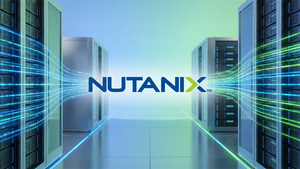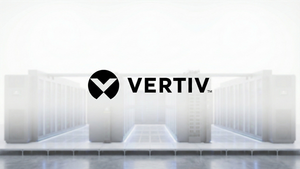
Intel Corporation (NASDAQ: INTC) is embarking on an ambitious and multifaceted strategic overhaul, dubbed IDM 2.0, aimed at reclaiming its historical leadership in semiconductor manufacturing and aggressively positioning itself in the burgeoning artificial intelligence (AI) chip market. This strategic pivot involves monumental investments in foundry expansion, the development of next-generation AI-focused processors, and a fundamental shift in its business model. The immediate significance of these developments cannot be overstated: Intel is directly challenging the established duopoly of TSMC (NYSE: TSM) and Samsung Electronics (KRX: 005930) in advanced chip fabrication while simultaneously aiming to disrupt NVIDIA's (NASDAQ: NVDA) formidable dominance in AI accelerators. This audacious gambit seeks to reshape the global semiconductor supply chain, offering a much-needed alternative for advanced chip production and fostering greater competition and innovation in an industry critical to the future of AI.
This transformative period for Intel is not merely about incremental improvements; it represents a comprehensive re-engineering of its core capabilities and market approach. By establishing Intel Foundry as a standalone business unit and committing to an aggressive technological roadmap, the company is signaling its intent to become a foundational pillar for the AI era. These moves are crucial not only for Intel's long-term viability but also for the broader tech ecosystem, promising a more diversified and resilient supply chain, particularly for Western nations seeking to mitigate geopolitical risks associated with semiconductor manufacturing.
The Technical Backbone: Intel's Foundry and AI Chip Innovations
Intel's strategic resurgence is underpinned by a rigorous and rapid technological roadmap for its foundry services and a renewed focus on AI-optimized silicon. Central to its IDM 2.0 strategy is the "five nodes in four years" plan, aiming to regain process technology leadership by 2025. This aggressive timeline includes critical advanced nodes such as Intel 20A, introduced in 2024, which features groundbreaking RibbonFET (gate-all-around transistor) and PowerVia (backside power delivery) technologies designed to deliver significant performance and power efficiency gains. Building on this, Intel 18A is slated for volume manufacturing in late 2025, with the company confidently predicting it will achieve process leadership. Notably, Microsoft (NASDAQ: MSFT) has already committed to producing a chip design on the Intel 18A process, a significant validation of Intel's advanced manufacturing capabilities. Looking further ahead, Intel 14A is already in development for 2026, with major external clients partnering on its creation.
Beyond process technology, Intel is innovating across its product portfolio to cater specifically to AI workloads. The new Xeon 6 CPUs are designed with hybrid CPU-GPU architectures to support diverse AI tasks, while the Gaudi 3 AI chips are strategically positioned to offer a cost-effective alternative to NVIDIA's high-end GPUs, targeting enterprises seeking a balance between performance and affordability. The Gaudi 3 is touted to offer up to 50% lower pricing than NVIDIA's H100, aiming to capture a significant share of the mid-market AI deployment segment. Furthermore, Intel is heavily investing in AI-capable PCs, planning to ship over 100 million units by the end of 2025. These devices will feature new chips like Panther Lake and Clearwater Forest, leveraging the advanced 18A technology, and current Intel Core Ultra processors already incorporate neural processing units (NPUs) for accelerated on-device AI tasks, offering substantial power efficiency improvements.
A key differentiator for Intel Foundry is its "systems foundry" approach, which extends beyond mere wafer fabrication. This comprehensive offering includes full-stack optimization, from the factory network to software, along with advanced packaging solutions like EMIB and Foveros. These packaging technologies enable heterogeneous integration of different chiplets, unlocking new levels of performance and integration crucial for complex AI hardware. This contrasts with more traditional foundry models, providing a streamlined development process for customers. While initial reactions from the AI research community and industry experts are cautiously optimistic, the true test will be the successful ramp-up of volume manufacturing for 18A and the widespread adoption of Intel's AI chips in enterprise and hyperscale environments. The company faces the challenge of building a robust software ecosystem to rival NVIDIA's dominant CUDA, a critical factor for developer adoption.
Reshaping the AI Industry: Implications for Companies and Competition
Intel's strategic maneuvers carry profound implications for a wide array of AI companies, tech giants, and startups. The most immediate beneficiaries could be companies seeking to diversify their supply chains away from the current concentration in Asia, as Intel Foundry offers a compelling Western-based manufacturing alternative, particularly appealing to those prioritizing geopolitical stability and secure domestic computing capabilities. Hyperscalers and government entities, in particular, stand to gain from this new option, potentially reducing their reliance on a single or limited set of foundry partners. Startups and smaller AI hardware developers could also benefit from Intel's "open ecosystem" philosophy, which aims to support various chip architectures (x86, ARM, RISC-V, custom AI cores) and industrial standards, offering a more flexible and accessible manufacturing pathway.
The competitive implications for major AI labs and tech companies are substantial. Intel's aggressive push into AI chips, especially with the Gaudi 3's cost-performance proposition, directly challenges NVIDIA's near-monopoly in the AI GPU market. While NVIDIA's Blackwell GPUs and established CUDA ecosystem remain formidable, Intel's focus on affordability and hybrid solutions could disrupt existing purchasing patterns for enterprises balancing performance with budget constraints. This could lead to increased competition, potentially driving down costs and accelerating innovation across the board. AMD (NASDAQ: AMD), another key player with its MI300X chips, will also face intensified competition from Intel, further fragmenting the AI accelerator market.
Potential disruption to existing products or services could arise as Intel's "systems foundry" approach gains traction. By offering comprehensive services from IP to design and advanced packaging, Intel could attract companies that lack extensive in-house manufacturing expertise, potentially shifting market share away from traditional design houses or smaller foundries. Intel's strategic advantage lies in its ability to offer a full-stack solution, differentiating itself from pure-play foundries. However, the company faces significant challenges, including its current lag in AI revenue compared to NVIDIA (Intel's $1.2 billion vs. NVIDIA's $15 billion) and recent announcements of job cuts and reduced capital expenditures, indicating the immense financial pressures and the uphill battle to meet revenue expectations in this high-stakes market.
Wider Significance: A New Era for AI Hardware and Geopolitics
Intel's foundry expansion and AI chip strategy fit squarely into the broader AI landscape as a critical response to the escalating demand for high-performance computing necessary to power increasingly complex AI models. This move represents a significant step towards diversifying the global semiconductor supply chain, a crucial trend driven by geopolitical tensions and the lessons learned from recent supply chain disruptions. By establishing a credible third-party foundry option, particularly in the U.S. and Europe, Intel is directly addressing concerns about reliance on a concentrated manufacturing base in Asia, thereby enhancing the resilience and security of the global tech infrastructure. This aligns with national strategic interests in semiconductor sovereignty, as evidenced by substantial government support through initiatives like the U.S. CHIPS and Science Act.
The impacts extend beyond mere supply chain resilience. Increased competition in advanced chip manufacturing and AI accelerators could lead to accelerated innovation, more diverse product offerings, and potentially lower costs for AI developers and enterprises. This could democratize access to cutting-edge AI hardware, fostering a more vibrant and competitive AI ecosystem. However, potential concerns include the immense capital expenditure required for Intel's transformation, which could strain its financial resources in the short to medium term. The successful execution of its aggressive technological roadmap is paramount; any significant delays or yield issues could undermine confidence and momentum.
Comparisons to previous AI milestones and breakthroughs highlight the foundational nature of Intel's efforts. Just as the development of robust general-purpose CPUs and GPUs paved the way for earlier AI advancements, Intel's push for advanced, AI-optimized foundry services and chips aims to provide the next generation of hardware infrastructure. This is not merely about incremental improvements but about building the very bedrock upon which future AI innovations will be constructed. The scale of investment and the ambition to regain manufacturing leadership evoke memories of pivotal moments in semiconductor history, signaling a potential new era where diverse and resilient chip manufacturing is as critical as the algorithmic breakthroughs themselves.
The Road Ahead: Future Developments and Challenges
Looking ahead, the near-term and long-term developments stemming from Intel's strategic shifts are poised to profoundly influence the trajectory of AI hardware. In the near term, the successful ramp-up of volume manufacturing for the Intel 18A process in late 2025 will be a critical milestone. Proving its yield capabilities and securing additional major customers beyond initial strategic wins will be crucial for sustaining momentum and validating Intel's foundry aspirations. We can expect to see continued refinements in Intel's Gaudi AI accelerators and Xeon CPUs, with a focus on optimizing them for emerging AI workloads, including large language models and multi-modal AI.
Potential applications and use cases on the horizon are vast. A more diversified and robust foundry ecosystem could accelerate the development of custom AI chips for specialized applications, from autonomous systems and robotics to advanced medical diagnostics and scientific computing. Intel's "systems foundry" approach, with its emphasis on advanced packaging and full-stack optimization, could enable highly integrated and power-efficient AI systems that were previously unfeasible. The proliferation of AI-capable PCs, driven by Intel's Core Ultra processors and future chips, will also enable a new wave of on-device AI applications, enhancing productivity, creativity, and security directly on personal computers without constant cloud reliance.
However, significant challenges need to be addressed. Intel must rapidly mature its software ecosystem to compete effectively with NVIDIA's CUDA, which remains a key differentiator for developers. Attracting and retaining top talent in both manufacturing and AI chip design will be paramount. Financially, Intel Foundry is in an intensive investment phase, with operating losses projected to peak in 2024. The long-term goal of achieving break-even operating margins by the end of 2030 underscores the immense capital expenditure and sustained commitment required. Experts predict that while Intel faces an uphill battle against established leaders, its strategic investments and government support position it as a formidable long-term player, potentially ushering in an era of greater competition and innovation in the AI hardware landscape.
A New Dawn for Intel and AI Hardware
Intel's strategic pivot, encompassing its ambitious foundry expansion and renewed focus on AI chip development, represents one of the most significant transformations in the company's history and a potentially seismic shift for the entire semiconductor industry. The key takeaways are clear: Intel is making a massive bet on reclaiming manufacturing leadership through its IDM 2.0 strategy, establishing Intel Foundry as a major player, and aggressively targeting the AI chip market with both general-purpose and specialized accelerators. This dual-pronged approach aims to diversify the global chip supply chain and inject much-needed competition into both advanced fabrication and AI hardware.
The significance of this development in AI history cannot be overstated. By offering a viable alternative to existing foundry giants and challenging NVIDIA's dominance in AI accelerators, Intel is laying the groundwork for a more resilient, innovative, and competitive AI ecosystem. This could accelerate the pace of AI development by providing more diverse and accessible hardware options, ultimately benefiting researchers, developers, and end-users alike. The long-term impact could be a more geographically distributed and technologically diverse semiconductor industry, less susceptible to single points of failure and geopolitical pressures.
What to watch for in the coming weeks and months will be Intel's execution on its aggressive manufacturing roadmap, particularly the successful ramp-up of the 18A process. Key indicators will include further customer announcements for Intel Foundry, the market reception of its Gaudi 3 AI chips, and the continued development of its software ecosystem. The financial performance of Intel Foundry, as it navigates its intensive investment phase, will also be closely scrutinized. This bold gamble by Intel has the potential to redefine its future and profoundly shape the landscape of AI hardware for decades to come.
This content is intended for informational purposes only and represents analysis of current AI developments.
TokenRing AI delivers enterprise-grade solutions for multi-agent AI workflow orchestration, AI-powered development tools, and seamless remote collaboration platforms.
For more information, visit https://www.tokenring.ai/.






